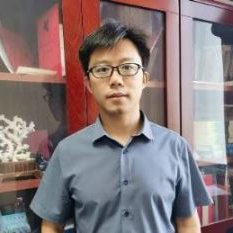Advanced Energy Storage Materials and Their Applications
A special issue of Molecules (ISSN 1420-3049). This special issue belongs to the section "Materials Chemistry".
Deadline for manuscript submissions: closed (31 January 2023) | Viewed by 21460
Special Issue Editor
Interests: structure; defects; interface; in situ TEM technique; energy storage materials; thermal electric materials; photocatalysts; atomic-scale mechanism
Special Issue Information
Dear Colleagues,
In recent years, significant progress in material and chemistry science, especially in the field of micro-nano science, has made the development and preparation of advanced energy storage materials possible, which also attracts an increasing number of researchers to be devoted to advanced energy storage materials. This Special Issue entitled “Advanced Energy Storage Materials and Their Applications” aims to cover recent progress and trends in energy storage materials. Types of contributions to this Special Issue can be full research articles, short communications, and reviews focusing on the design, development, preparation, characterization, and applications of energy storage materials.
Prof. Dr. Kun Zheng
Guest Editor
Manuscript Submission Information
Manuscripts should be submitted online at www.mdpi.com by registering and logging in to this website. Once you are registered, click here to go to the submission form. Manuscripts can be submitted until the deadline. All submissions that pass pre-check are peer-reviewed. Accepted papers will be published continuously in the journal (as soon as accepted) and will be listed together on the special issue website. Research articles, review articles as well as short communications are invited. For planned papers, a title and short abstract (about 100 words) can be sent to the Editorial Office for announcement on this website.
Submitted manuscripts should not have been published previously, nor be under consideration for publication elsewhere (except conference proceedings papers). All manuscripts are thoroughly refereed through a single-blind peer-review process. A guide for authors and other relevant information for submission of manuscripts is available on the Instructions for Authors page. Molecules is an international peer-reviewed open access semimonthly journal published by MDPI.
Please visit the Instructions for Authors page before submitting a manuscript. The Article Processing Charge (APC) for publication in this open access journal is 2700 CHF (Swiss Francs). Submitted papers should be well formatted and use good English. Authors may use MDPI's English editing service prior to publication or during author revisions.
Keywords
- energy storage
- thermal electric materials
- photo electric materials
- electrochemical energy storage materials
- photo/electric catalysis
- green chemistry
- sustainable chemistry






